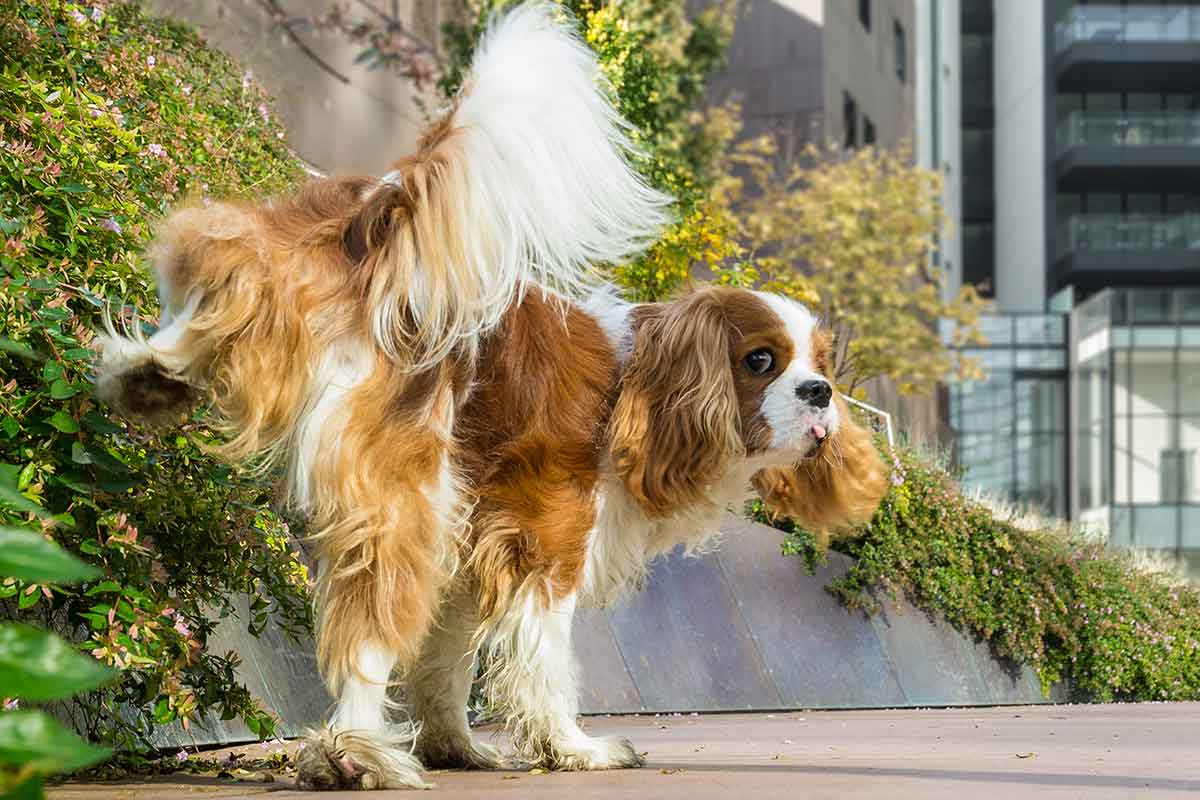Sharing living space with our dog friends is a natural extension of pets being an integral part of the family. But what doesn’t feel natural is walking across the carpet and feeling your feet squishing into a pile of poo or your socks soaking up moisture from a puddle of urine on the floor. Likewise, from the dog’s perspective, the concept of holding pee or poop while indoors doesn’t always come naturally. Venturing outdoors to relieve themselves is a habit puppies and adult dogs must learn. To best housetrain a puppy or help an adult dog who needs a potty-training refresh, here are ways to transition your dog’s bathroom behavior to the outdoors rather than inside the home:
Medical First
Eliminate the possibility of underlying medical causes for house training lapses. Partner with your dog’s Fear Free Certified veterinary team to uncover potential unresolved health issues that may play a role in the problem.
Limit Space
The greatest mistake pet parents make is giving too much space too soon. Just as a child earns more and more freedom as she matures, so too should dogs earn more space. In other words, don’t give your dog the keys to the entire house right away. If you already have, consider reducing privileges to one room or even a smaller area and gradually expand the area allowed as the dog proves responsible. Limit access by closing doors or using barriers such as baby gates or exercise pens. Use a harness and leash to keep your dog next to you so you can supervise his activity. When he’s unsupervised, limit access with a crate or gated dog area. Ideally, this dog-specific space will have nonporous hard flooring rather than carpeting where elimination smells are more likely to cling.
Set A Schedule
Puppies are individuals, but the rule of paw for the upward limit pups can hold their bladder is the pup’s age in months, plus one. For instance, a two-month-old pup can generally hold his bladder for up to three hours and a three-month-old for up to four hours. It’s best if pups are taken out every hour or immediately after finishing a meal, drinking water, playing, or waking from a nap. A schedule also works well to retrain adult dogs. Take them out every one to two hours. If the dog doesn’t potty, restrict his access in the home and try again in 15 minutes.
Reward The Right
Don’t just send your dog outdoors to potty; be there right next to him to give gentle praise as he eliminates. Then provide an immediate reward such as treats or a play session. This helps him make the connection between peeing and pooping outdoors and the reward.
Use A Verbal Cue
Pair a verbal cue such as “potty” by saying the word as the dog squats or lifts a leg. You can use separate cues for pee and poo. With repeated pairings, the word itself can prompt the dog’s need to eliminate because it’s conditioned with the action and relief of going to the bathroom. Bonus: a faster elimination when needed! Use the cue only for the first elimination outdoors each time you’re out, not for multiple markings.
Show Your Dog Where To Go
Familiarize your dog with eliminating on a variety of outdoor surfaces such as grass, dirt, concrete, asphalt, gravel, sand, bark, and leaves. Otherwise, dogs may become conditioned to certain surfaces and be thrown off track if the surface they prefer is unavailable. For instance, dogs moving from rural areas to the city may have difficulty adjusting if they are unaccustomed to peeing on concrete. One Pug, who was potty-trained outdoors when the leaves were falling in autumn, had difficulty adjusting to pottying outdoors once the leaves were gone. Her family faced substantial challenges in retraining her to use leaf-free areas.
Reconsider Potty Pads
Reconsider potty pads for housetraining unless you plan on using them for life. If so, place the pad inside a lowered storage bin or cat litter tray to make it easy for the dog to differentiate between the pad and the carpet or rugs. Or consider a substrate that’s vastly different than indoor flooring such as grass or recycled paper or pine litter placed inside a box or well defined area. Otherwise dogs may not distinguish between the carpet or the area rug and the potty pad. Pads also may create a preference for softer fabric textures rather than outdoor surfaces.
Cleanup On Aisle K9
If you catch your dog pottying indoors, don’t scold or punish. That can worsen the problem by causing the dog to become anxious about pottying in your presence. He may seek out hidden spaces to potty, making it difficult to break bad habits. Instead, prompt the dog to move outside and then clean up the area, using an enzymatic cleanser to destroy stains and odor.
Eliminate Other Possibilities
Consider potential reasons for the accident (too much freedom in the home or not enough opportunities to go out, for instance). If necessary, go back to basics with more frequent potty breaks, greater supervision, or limited access to certain rooms.
This article was reviewed/edited by board-certified veterinary behaviorist Dr. Kenneth Martin and/or veterinary technician specialist in behavior Debbie Martin, LVT.








